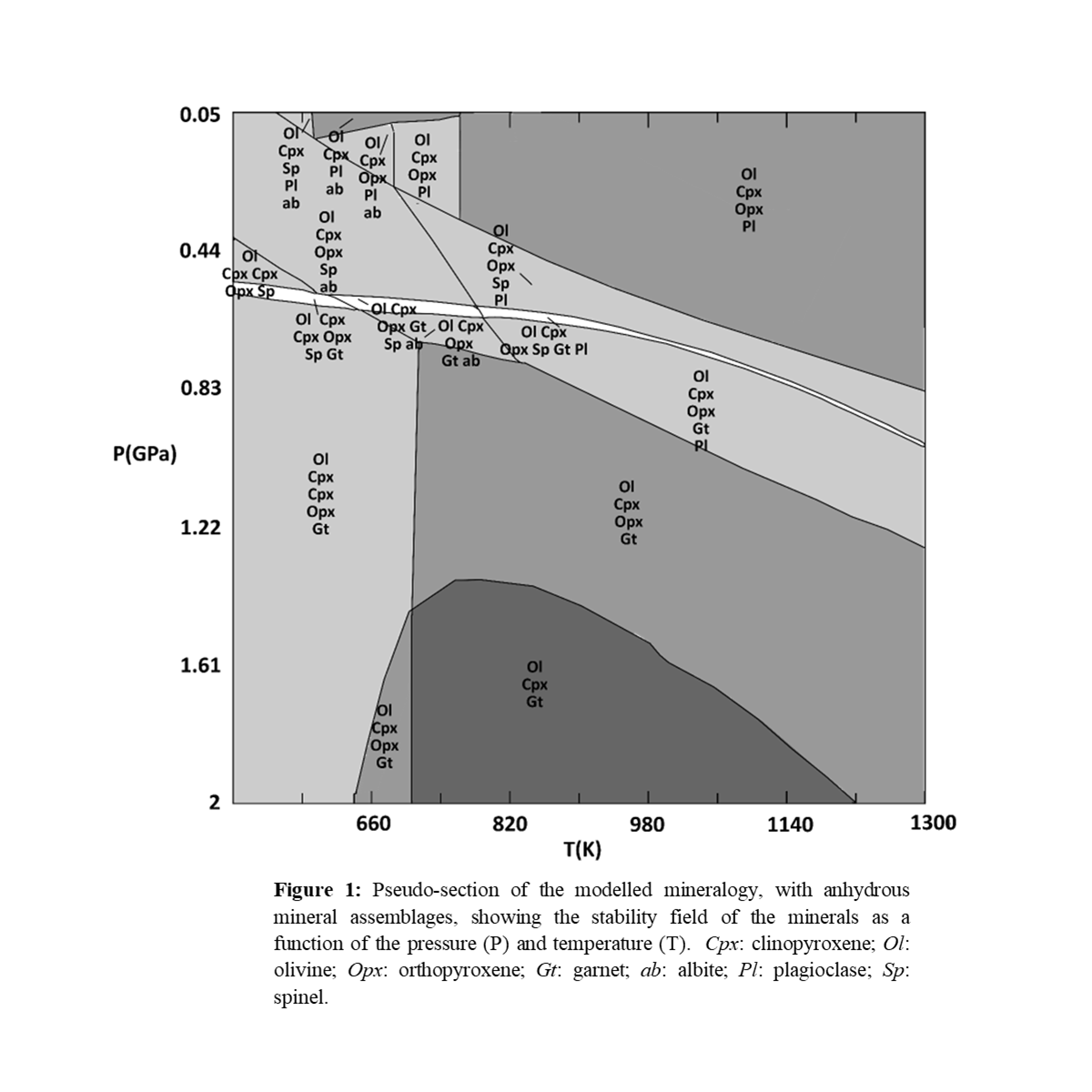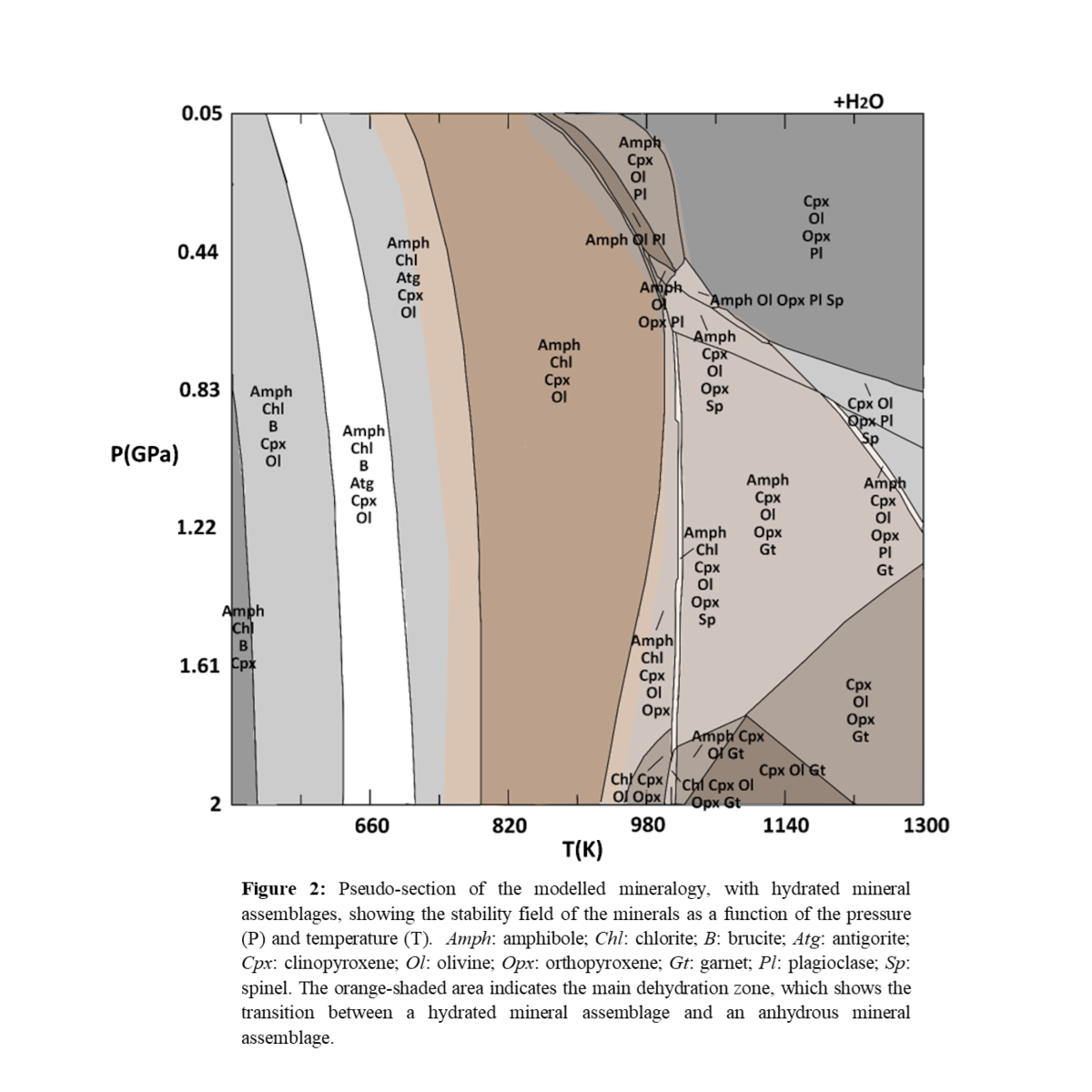Model of the mineralogy of the deep interior of Triton
- 1International Research School of Planetary Sciences, Pescara, Italy (camilla.cioria@unich.it)
- 2Dipartimento d'Ingegneria e Geologia, Università d'Annunzio, Pescara, Italy
Triton, the largest satellite of Neptune, represents a unique body in our Solar System. One of the few satellites in Solar System with ongoing geological activity, Triton, which likely originated in the Kuiper’s Belt [1], underwent a troubling evolution, passing through Neptune’s capture [2], subsequent prolonged orbit circularization, which was followed by an enhanced thermal heating and internal differentiation. The predicted differentiated interior includes an outer ice shell, a possible internal ocean, a rocky deep interior, and a putative metallic core [3].
We model the mineral assemblages of the deep interior of Triton, considering a chondritic-like bulk composition. We describe three different evolutionary scenarios and their related mineral assemblages: anhydrous, completely hydrated, and dehydrated. Finally, we show that further investigations of Triton’s gravity field may provide new insights into the present mineral assemblage of its deep interior.
Methods
We used Perple_X software [4] to model three mineral assemblages for Triton’s deep interior at thermodynamical equilibrium, as a function of pressure (P) and temperature (T). We choose as a precursor material a chondritic bulk composition (CM, Mighei group), following a largely adopted approach in literature [5].
Discussion and conclusions
Our modelling provides three distinct mineral assemblages for Triton’s deep interior. Figure 1 shows the anhydrous mineral assemblage, which is dominated by common mantle-forming silicates (olivine, pyroxenes, and accessory phases). Figure 2 shows the hydrated mineral assemblage, formed by completely hydrated silicates (antigorite, amphiboles, chlorite, talc) which results from the water-alteration of rocks, as frequently revealed by chondritic samples [6].
Finally, we describe a dehydrated scenario (Figure 2, orange shaded area), which occurs when the hydration of a silicate shell, composed of amphiboles, olivine, pyroxenes, and accessory phases has been followed by a thermal event.
Therefore, we suggest an internal layering of the rocky core of Triton, which may imply a density-dependent distribution of minerals with increasing lithostatic pressure, with relevant implications for the global internal structure of Triton and its geological processes. The measurement of the degree two of the gravity field would constrain the present mineral assemblages of the deep interior of Triton to a higher degree of certainty.
Acknowledgments
G.M. and C.C. acknowledge support from the Italian Space Agency (2020-13-HH.0).
References: [1] McKinnon, W. B. (1984). Nature, 311(5984), 355-358. [2] Agnor, C. B., & Hamilton, D. P. (2006). Nature, 441(7090), 192-194. [3] McKinnon, W. B. and Kirk R.L. (2014), Chapter 40, Triton, Encyclopedia of the solar system, Third Edition, Elsevier, 861-881. [4] Connolly, J.A.D.(2005). Earth Planet Sci Lett, 236.1-2.524-541. [5] Néri, A., et al., (2020). Earth Planet Sci Lett, 530, 115920. [6] Brearley, A. J. (2006). Meteorites and the early solar system II, 943, 587-624.


How to cite: Cioria, C. and Mitri, G.: Model of the mineralogy of the deep interior of Triton, Europlanet Science Congress 2022, Granada, Spain, 18–23 Sep 2022, EPSC2022-492, https://doi.org/10.5194/epsc2022-492, 2022.

